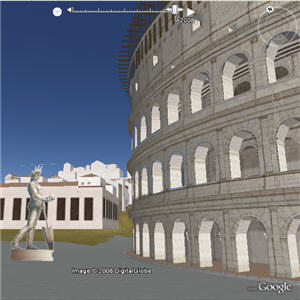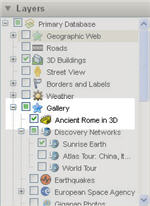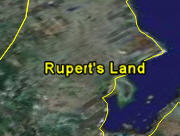 This week Google announced the release of Ancient Rome in 3D for Google Earth. This new layer loads a 3D model of Emperor Constantine’s Rome, 1688 years ago.
This week Google announced the release of Ancient Rome in 3D for Google Earth. This new layer loads a 3D model of Emperor Constantine’s Rome, 1688 years ago.
Switching the layer on is relatively straight forward, just open the ‘Layers’ tag in the side panel of Google maps, open ‘Gallery’ then tick Ancient Rome in 3D. Then, when you zoom into Rome (the Google Earth zoom in from space is still one of the coolest things about this) there will be a tone of yellow building icons floating above the city. From here, click on any building, then the Ancient Terrain link, followed by the Ancient Roman Landmarks and buildings links. After a little loading time, the 3D model will start to pop up on your screen. Then, you’re free to explore. My PC slowed down considerably for this, I think you´ll need a really high spec machine to look around smoothly, but regardless, the effect is pretty good.
 Another nice Google Earth add-on I found was the animated political boundaries. I know, it sounds thrilling,
Another nice Google Earth add-on I found was the animated political boundaries. I know, it sounds thrilling, but it’s an interesting way to see the way borders change over history. Borders are superimposed onto the Earth, and as you move the time bar along, the borders move, so you’ll see empires flowering and disappearing, countries expanding and contracting until you reach 2008. All you have to do is download the .KML file, and it will automatically open in Google Earth. It looks reasonably accurate to me, but I’m sure there are things missing that people could get very angry about! Check it out and see!
but it’s an interesting way to see the way borders change over history. Borders are superimposed onto the Earth, and as you move the time bar along, the borders move, so you’ll see empires flowering and disappearing, countries expanding and contracting until you reach 2008. All you have to do is download the .KML file, and it will automatically open in Google Earth. It looks reasonably accurate to me, but I’m sure there are things missing that people could get very angry about! Check it out and see!
 The last Google Earth toy I found is less likely to educate or offend – it’s the Geogreeting site. Someone, or some people with far too much time on their hands, have scoured Google Earth and found buildings with the shapes of all the letters of the alphabet, and with Geogreeting, you can enter a message and send it to your friends and family, who’ll receive an animated e-card with your message.
The last Google Earth toy I found is less likely to educate or offend – it’s the Geogreeting site. Someone, or some people with far too much time on their hands, have scoured Google Earth and found buildings with the shapes of all the letters of the alphabet, and with Geogreeting, you can enter a message and send it to your friends and family, who’ll receive an animated e-card with your message.

